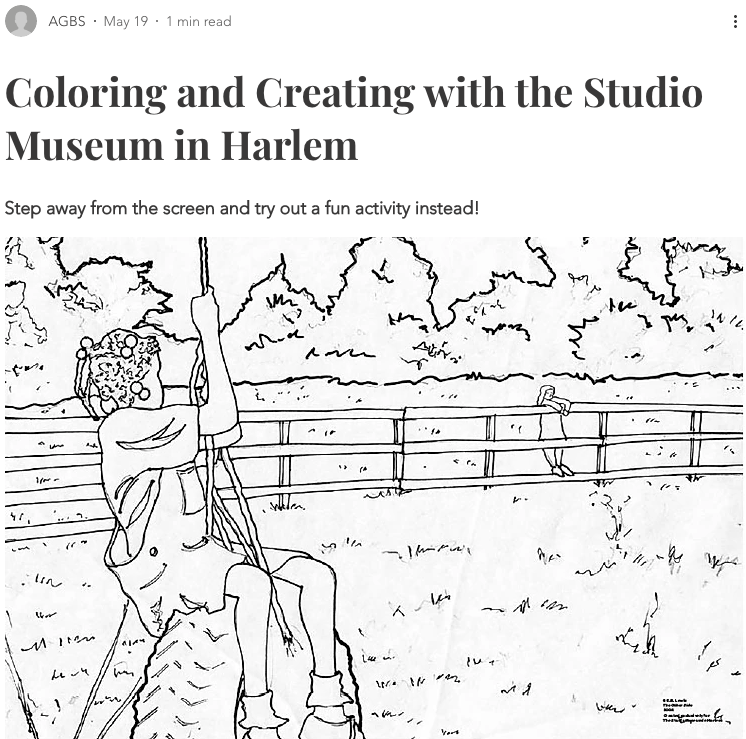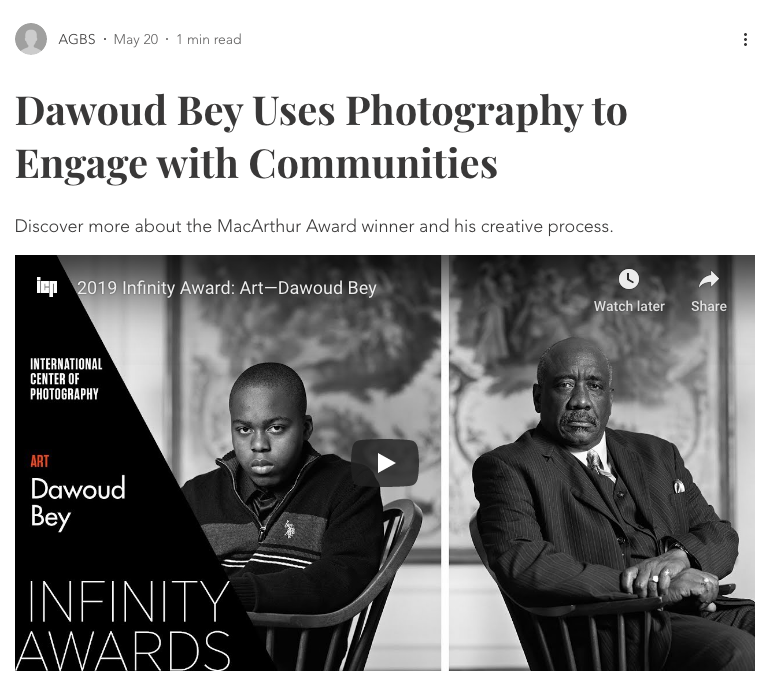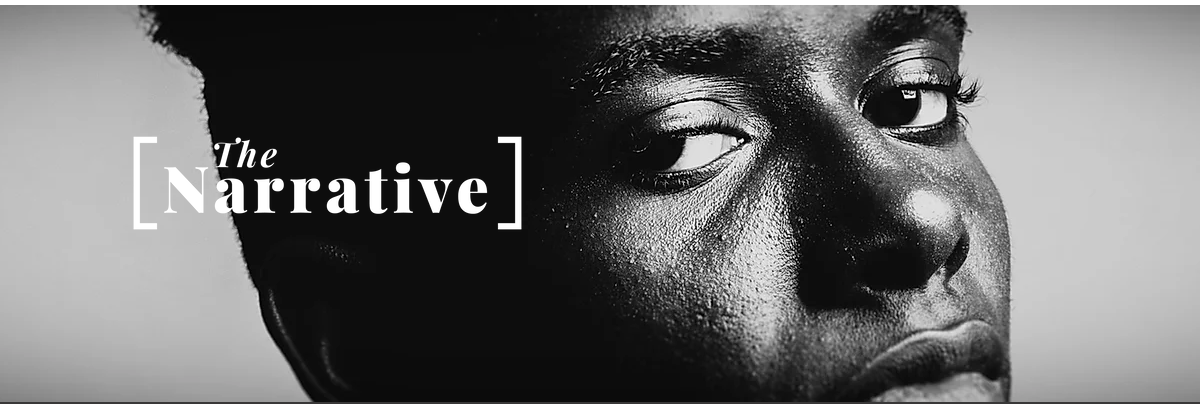In the spring of 2020, the Art Galleries at Black Studies’ (AGBS) Christian-Green Gallery and Idea Lab closed their doors to help contain the spread of COVID-19. As such, we joined the ranks of thousands of art institutions worldwide, who were all confronting the same conundrum: Without physical access to art, how can we create meaningful art experiences?
Some of the finest international art institutions increased their online offerings, adding virtual tours which provided some quarantining art enthusiasts first-time peeks into the halls of the Louvre and the Tate. In New York City, institutions like the Metropolitan Museum of Art and The Whitney Museum of American Art shared behind the scenes interviews with artists and curators.

In Austin, when we considered how we might engage with our audiences, our mission statement provided clear direction. The Art Galleries at Black Studies were designed not only to exhibit art, but to contemplate and discuss art and material culture as it relates to the Black experience in the United States, Africa and the diaspora. Knowing full well that for some people access to art isn’t always a given, we’d built our institution on a foundation which provided clear direction in a new era. If physical access to the art which prompts the conversations, critical thought and the ideas which pass through the galleries isn’t possible, how could we continue to provide access to the narratives behind the works of art?
Welcome, The Narrative, an online space which provides another means of access to the resources which inspire us to think, ask questions, and marvel at the world of Black material culture.
As described in Sightlines magazine, The Narrative “offers links to interviews with artists and curators, essays by scholars and students, virtual gallery tours, films, podcasts and even playlists.” The platform is an aggregator of local, national and international resources which aim to further the conversations that would surround the works of art in the galleries.
But the significance of AGBS’s new platform isn’t merely it’s accomplishment as a reaction to COVID-19 restrictions. The Narrative stands to continue to draw attention to the multiple threads of creative expression throughout the Black diaspora — casting light on narratives that have been underheard for too long.

As 2020 bears witness to a new spate of racial uprisings, predominantly white art spaces are checking themselves and calling for racial solidarity as they contend with the ways in which people of color have been excluded from these institutions. Cherise Smith, chair of the African and African Diaspora Studies Department and the founding executive director of AGBS told Sightlines, “I would ask [the museums] to consider who these pleas of solidarity are for. Are they for their white constituents? Or are they for the people of color that they’ve never engaged with over the years?”
At the 2015 opening of the Whitney Museum’s new building, Michelle Obama described how children living less than a mile away might not imagine themselves ever visiting a museum. “I was one of those kids myself,” she said. “So I know that feeling of not belonging in a place like this.”
In an op-ed for Hyperallergic, I shared that the Andrew W. Mellon Foundation reports that although the US’s racial and ethnic makeup becomes more diverse, museums and arts organizations do not reflect the country’s changing demographic. Mona Chalabi, a data journalist and artist interprets a report from the National Endowment for the Arts, like this: In one year, “white Americans were almost twice as likely as Black or Hispanic Americans to have done at least one arts activity…”

It’s true: Predominantly white art spaces are confronting systemic racist polices, reassessing their programs and reexamining their infrastructures, like never before. Such pivots are difficult when trying to undo decades of institutional practice. But having been built with the intent to explore underrepresented narratives, AGBS need not pivot its focus on providing content which seeks to further all of us.
Through the Narrative, AGBS continues to unpack the stories that have led to the creation of the works that some of us felt we could never visit, even before a pandemic struck. Whether coloring pages from the Studio Museum in Harlem or watching a short film on Haitian machete fencing or an interview with photographer Dawoud Bey, in The Narrative’s space we unapologetically share the layered complexities of our narrative.
Lise Ragbir is the director of the Art Galleries at Black Studies.
